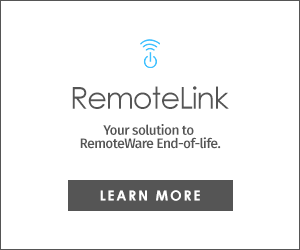Present day retail environments are transitioning to All-in-One (AIO) systems at store counters; tablet POS systems for servers used to take orders and bills in restaurants; and the self-service kiosk POS used to complete transactions without help from an associate. These types of POS systems can manage transactions in many environments, from online point of sale to brick and mortar to the melding of the two. The key to avoiding chaos is a uniform system that runs on every type of POS device.
All-in-One (AIO) POS
All-in-One (AIO) POS systems incorporate Desktop style PCs with touchscreen monitors, nproviding multiple capabilities that meet high standards for function. These systems include POS terminals designed to integrate easily with peripherals like scanners, scales, card readers, and receipt printers. They allow vendors to implement various software solutions and run multiple POS locations from a single system.
POS Terminals
A POS terminal is an electronic device that combines hardware and software to accept payments in all forms—cash, credit, debit, and mobile wallet—and process them. POS terminals may also offer options for printed, digital, or no receipt. Also consider where the system will run—whether it be an on-premises POS or cloud POS.
On-premises POS systems tends to use customized legacy systems with an internal network and local server. With the modern day digital shift to eCommerce, the popularity of cloud POS systems has increased. Cloud-based POS lets you access the platform anywhere with an internet connection, adding the advantages of remote access, scalability, and easy updates. Either way, the POS software collects data that will let your business track sale transactions, inventory, update stock levels, send promotional communications, and run loyalty programs.
Desktop POS
Desktop POS systems typically run on a PC and connect to peripherals like barcode scanners, credit card readers, receipt printers, and cash drawers to let businesses handle every transaction task. By integrating with other apps, your POS system can also provide valuable insights on critical business activities, such as marketing and accounting. The lifespan of a desktop POS typically runs seven to 10 years before the technology needs a refresh. Although mobile POS is rising in popularity, it is not expected to replace desktop systems any time soon, remaining a solid form factor that’s particularly popular in various industries, including retail, banking, and hospitality.
Mobile POS
In mobile POS (mPOS) systems, a mobile device, such as a tablet, acts as the POS terminal. Tablet POS systems are particularly popular due to the low upfront investment required. Utilizing a thin client with a scanner and card reader that only runs the POS software at the endpoint, the transaction itself is processed on an in-store server or desktop.
Like POS terminals at a retail counter, front desk, or other point of sale, mPOS systems connect to multiple hardware peripherals. The major advantage is obvious: they’re mobile. That makes them popular in such places as grocery retail environments, freeing sales associates to walk the floor, assist customers, advise them, and take payments anywhere when lines are backed up. In restaurants, servers use mPOS systems to take orders, send them digitally to the kitchen, and quickly share an accurate bill with diners.
As POS systems mature, they will change dramatically to fit business needs and customer demands. At RemoteRelief we work together with companies to securely manage POS endpoints. Proudly certified & partnered with industry leaders such as VMware, Zebra Technologies, & Unwired RemoteLink, to deliver transformative solutions and secure support for the evolving retail environment, and to improve the retail experience for shoppers and store associates alike.
Where RemoteRelief shines is when an IT department doesn't always have enough digital workspace expertise on its staff to create and maintain these changes, deployments, and integrations. Our subject matter experts, specialize in assisting clients in setup, deployment, and remote management of enterprises' systems and devices as well as secure operational data movement of vital company data from physical endpoints.
If you would like more information about RemoteRelief and our services, please subscribe to our tech blogs. If you are interested in a demonstration or learning more about RemoteRelief's services, features, and benefits, click here to speak with a subject matter specialist.



